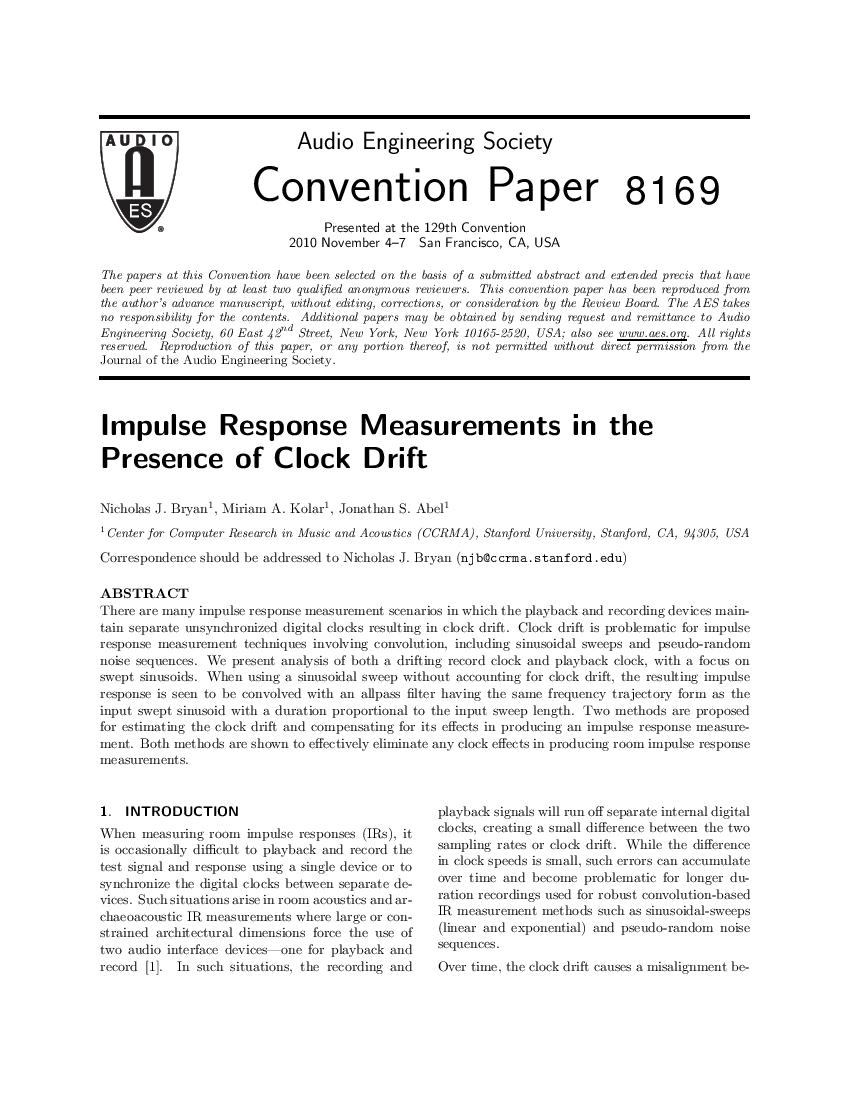Home / Publications / E-library page
You are currently logged in as an
Institutional Subscriber.
If you would like to logout,
please click on the button below.
Home / Publications / E-library page
Only AES members and Institutional Journal Subscribers can download
There are many impulse response measurement scenarios in which the playback and recording devices maintain separate unsynchronized digital clocks resulting in clock drift. Clock drift is problematic for impulse response measurement techniques involving convolution, including sinusoidal sweeps and pseudo-random noise sequences. We present analysis of both a drifting record clock and playback clock, with a focus on swept sinusoids. When using a sinusoidal sweep without accounting for clock drift, the resulting impulse response is seen to be convolved with an allpass filter having the same frequency trajectory form as the input swept sinusoid with a duration proportional to the input sweep length. Two methods are proposed for estimating the clock drift and compensating for its effects in producing an impulse response measurement. Both methods are shown to effectively eliminate any clock effects in producing room impulse response measurements.
Author (s): Abel, Jonathan S.; Bryan, Nicholas J.; Kolar, Miriam A.
Affiliation:
Center for Computer Research in Music and Acoustics, Department of Music, Stanford University, Stanford, CA, USA
(See document for exact affiliation information.)
AES Convention: 129
Paper Number:8169
Publication Date:
2010-11-06
Import into BibTeX
Session subject:
Acoustical Measurements
Permalink: https://aes2.org/publications/elibrary-page/?id=15592
(305KB)
Click to purchase paper as a non-member or login as an AES member. If your company or school subscribes to the E-Library then switch to the institutional version. If you are not an AES member Join the AES. If you need to check your member status, login to the Member Portal.

Abel, Jonathan S.; Bryan, Nicholas J.; Kolar, Miriam A.; 2010; Impulse Response Measurements in the Presence of Clock Drift [PDF]; Center for Computer Research in Music and Acoustics, Department of Music, Stanford University, Stanford, CA, USA; Paper 8169; Available from: https://aes2.org/publications/elibrary-page/?id=15592
Abel, Jonathan S.; Bryan, Nicholas J.; Kolar, Miriam A.; Impulse Response Measurements in the Presence of Clock Drift [PDF]; Center for Computer Research in Music and Acoustics, Department of Music, Stanford University, Stanford, CA, USA; Paper 8169; 2010 Available: https://aes2.org/publications/elibrary-page/?id=15592